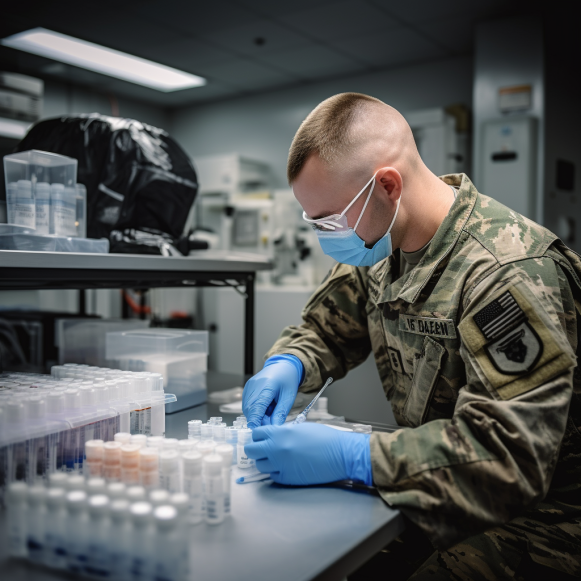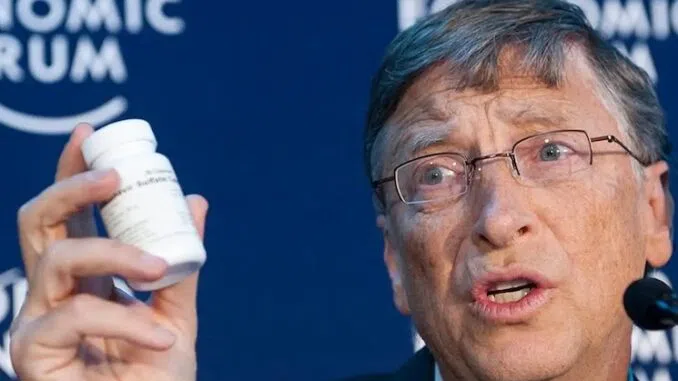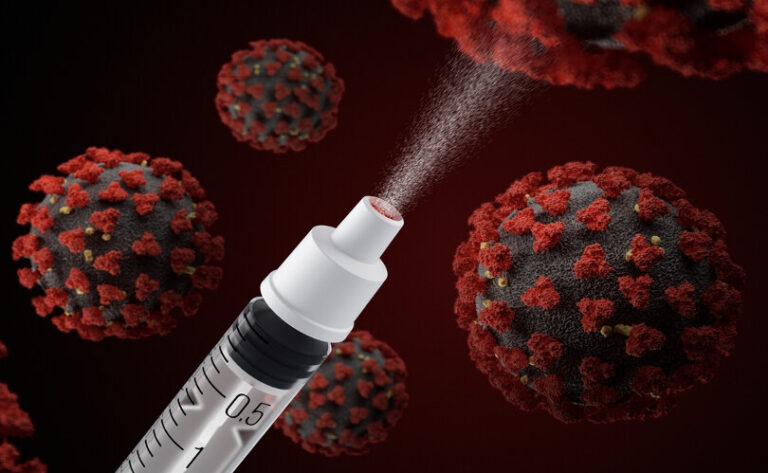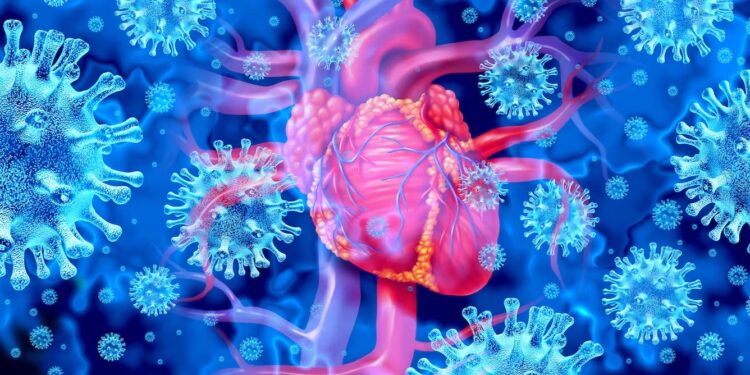US Military Study on Postvaccination Myocarditis Released

The U.S. military was among the first to detect heart inflammation cases among the vaccinated.
A small military study on postvaccination myocarditis was quietly released, with authors claiming no overt or subclinical heart inflammation was found.
According to outside experts, the study did reveal some concerning signs, which the military researchers did not pursue further.
The United States military was among the first in the world to detect myocarditis and a related condition, pericarditis, following COVID-19 vaccination. The military also required COVID-19 vaccination for its personnel.
With these facts in mind, the authors of the new paper stated that “it is especially important to understand the prevalence of subclinical myocarditis/pericarditis as well as the potential for additional complications.”
The researchers enrolled people between the ages of 12 and 40 who had received a Pfizer or Moderna modified messenger RNA (mRNA) shot and were enrolled in TRICARE, which provides health care to many service members and their families. Between June 2022 and June 2023, the participants received a second or subsequent dose of a vaccine.
Participants visited investigators within 24 hours of vaccination and three to seven days later. The severity of their symptoms, as well as their troponin T and C-reactive protein levels, were assessed. Electrocardiograms were also performed on the patients by the researchers.
The study included thirty people, 23 of whom were active-duty military members. After vaccination, four patients’ troponin T levels increased from 1 to 16 nanograms per liter, indicating subclinical heart damage. The researchers, however, stated that none of the patients had subclinical myocarditis because they defined subclinical myocarditis as an increase of more than 20 nanograms per liter. A fifth participant reported chest pain and shortness of breath, both of which could be signs of heart inflammation, but no increase in troponin T.
“This is the first study to report on signs or symptoms of myocarditis/pericarditis collected through active surveillance following administration of mRNA vaccination in a military setting,” wrote Dr. Richelle Homo and her co-authors.
The authors admitted that the study was insufficiently large to estimate the incidence of myocarditis after vaccination “due to the unpredictable nature of the pandemic and delays in recruitment.” Many people, including military personnel, had stopped receiving COVID-19 vaccines by June 2022.
“However, the lack of myocarditis/pericarditis in this study provides some reassurance.” “As mRNA technology advances, a better understanding of the incidence and scope of these complications will be required to ensure populations are well informed about the risks, benefits, and potential need for monitoring following administration,” the authors conclude.
The British Medical Journal published the study.
Experts Weigh In
The study’s small population and the definition of subclinical myocarditis, according to several experts who reviewed the paper, did not provide any reassurance.
In previous studies, rates of clinical myocarditis, or heart inflammation manifesting as symptoms, ranged from 1 in 3,000 to 6,000.
Doctors say that defining subclinical myocarditis as troponin elevated to a certain level without a cardiac MRI cannot rule out the condition.
The levels found in some of the participants indicate “some damage to the myocardium,” according to Dr. Kirk Milhoan, a pediatric cardiologist. He expressed his desire to see cardiac MRIs performed on those participants.
“Why don’t we look further and see what that is, as opposed to saying, ‘well, since nothing was over 20, it was just ignored,'” he said in an interview with The Epoch Times.
According to Dr. Sanjay Verma, a cardiologist in California, elevated troponin, especially at low levels, can have non-vaccine causes, and cardiac imaging can help distinguish between the causes.
Dr. Verma emphasized the importance of the study population, noting that researchers only included people who had received at least their second dose of a vaccine.
“By definition, this inclusion criterion would exclude those who may have already had myocarditis after dose 1.” Furthermore, 70% of the participants in the study received a fourth dose (i.e., they did not have myocarditis after the first three). “As a result, the study is a self-selected population of those who did not have myocarditis from doses 1-3,” Dr. Verma explained in an email to The Epoch Times.
“Therefore, the study doesn’t prove or disprove anything about the true rate of myocarditis or subclinical myocarditis in all comers who receive dose 1 and 2 of mRNA COVID-10 vaccination.”
It’s unclear why the researchers settled on the 20 nanograms per liter threshold. The first military study used a definition of 10-fold to 400-fold the upper limits of reference ranges, which can be as low as 0.01 nanograms per liter, according to the Cleveland Clinic. The first study, which looked at clinical myocarditis, also required acute chest pain.
A newer study from Switzerland looked at subclinical myocarditis and used a minimum of 8.9 nanograms per liter in women and 15.5 nanograms per liter in men, though other factors were considered as well.
Dr. Homo and the Defense Health Agency, which funded the study, did not respond to emailed questions.
The authors declared that they had no conflicts of interest.





